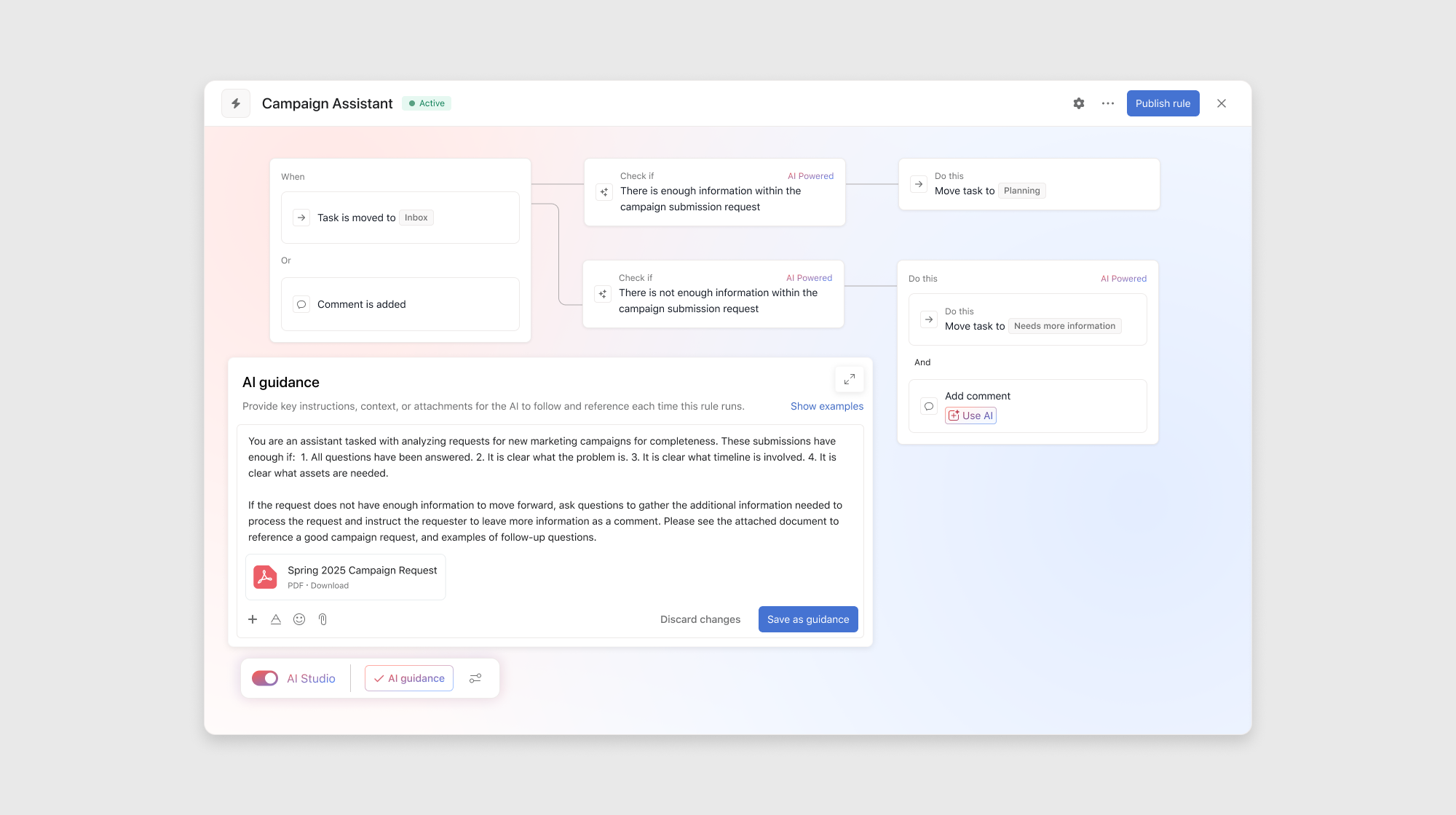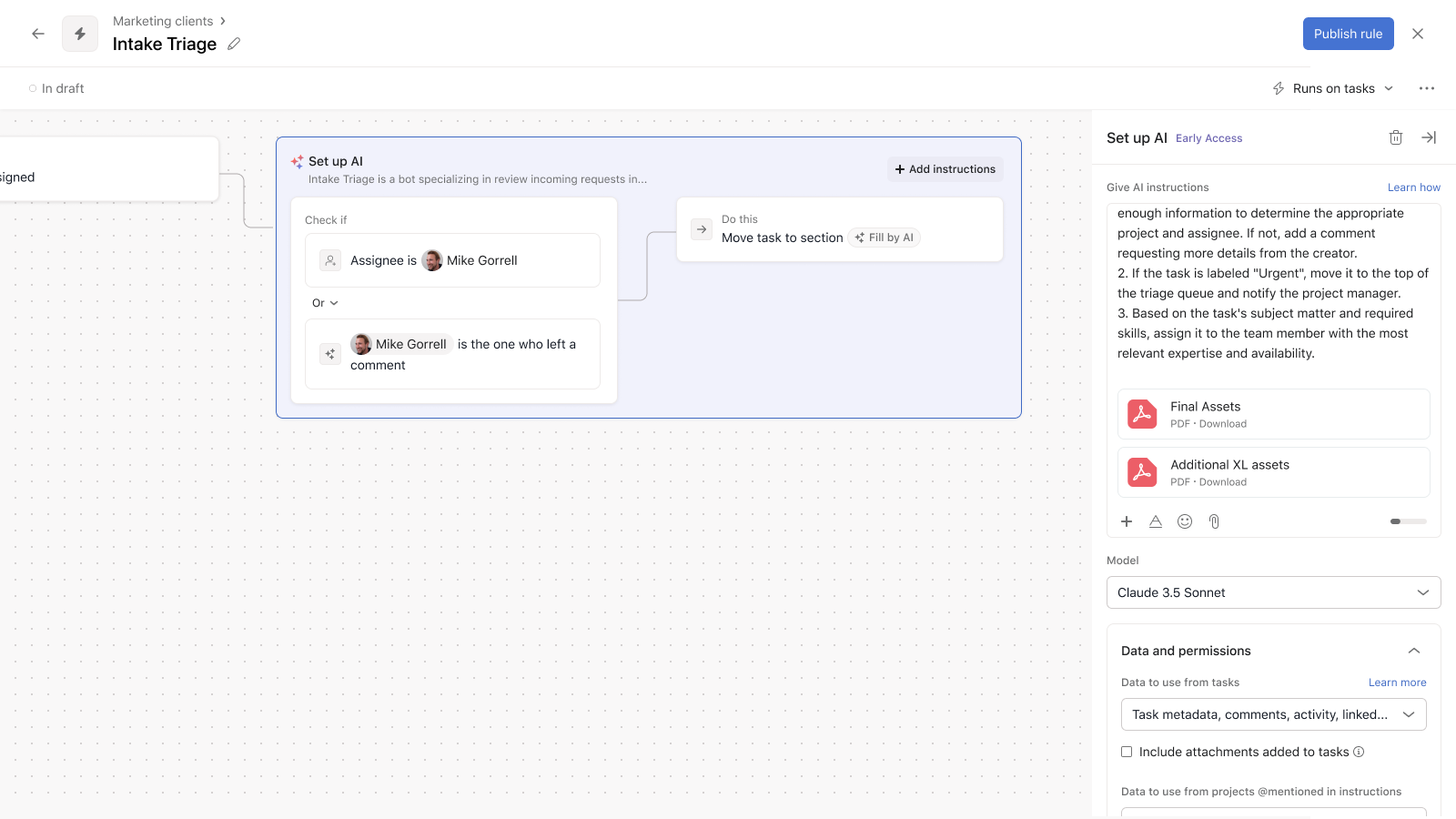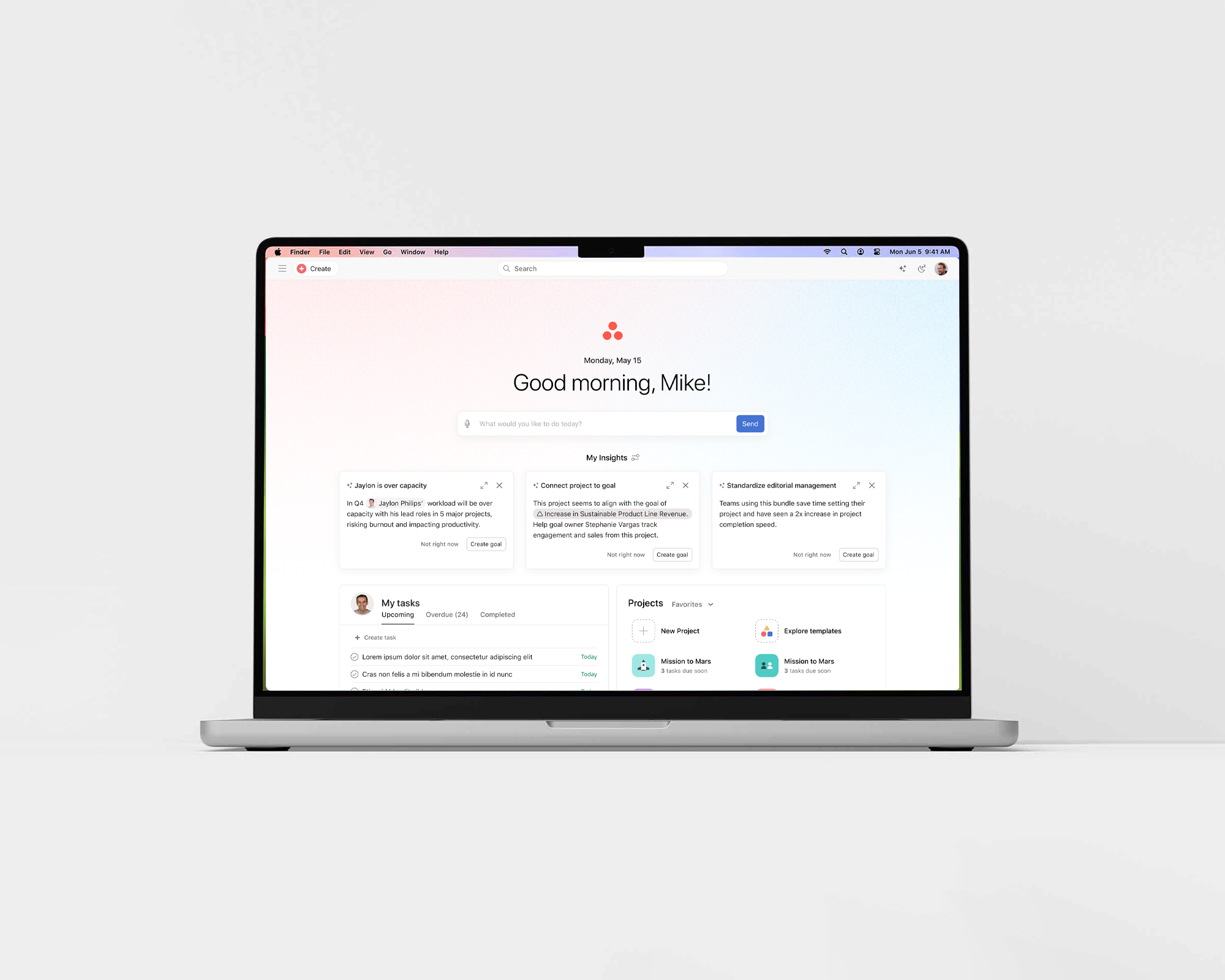
$1.47B
Increase following earnings call featuring AI Studio
One-to-many
Creating exponential value through accessible automation
From hackathon to business transformation
AI Studio emerged from a critical insight: traditional AI feature implementation focused on high daily active usage, but enterprise customers wanted more targeted, powerful automations with one-to-many impact. What began as a hackathon exploration of AI within our rule builder evolved into a broader vision enabling users at all levels to create exponential value without requiring broad end-user adoption.
This paradigm shift allowed us to focus on building features that empower anyone—from PMOs to managers to individual contributors—to create immense value for many, rather than features requiring constant individual engagement.

Enhancing usability through thoughtful design
Our design process focused on making complex AI automation capabilities accessible and intuitive. We wanted to find a balance in the design between simple and powerful. One challenge was creating a natural distinction between giving AI instructions to generate a rule, and giving it guidance to use whenever the rule runs. Through multiple iterations and usability testing, I helped transform the interface to improve clarity and reduce cognitive load.

Execution History for enterprise-grade reliability
A key challenge for AI-powered automation is transparency and trust. I designed a robust Execution History system that provides clear visibility into AI performance, enabling administrators to track, troubleshoot, and optimize their automations.

Breaking silos through startup methodology
AI Studio required a new collaborative model that challenged traditional organizational boundaries. We intentionally created a startup-within-the-business approach, bringing sales enablement team members to sit directly with our product team—something unprecedented at Asana.
This cross-functional collaboration accelerated our iteration cycles and provided direct customer feedback channels. By bridging the gap between product development and customer-facing teams, we were able to rapidly refine our offering based on real-world implementation insights.

